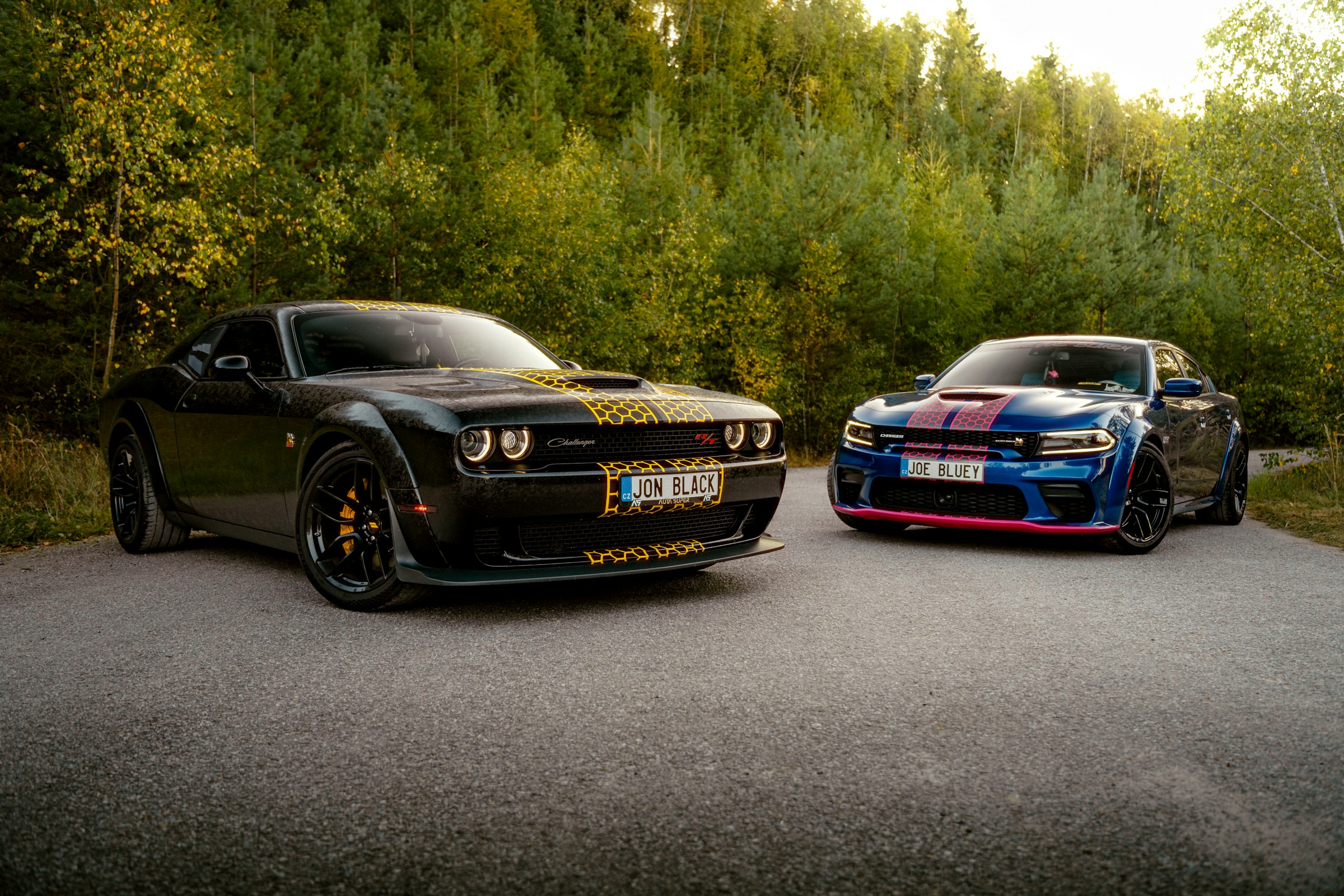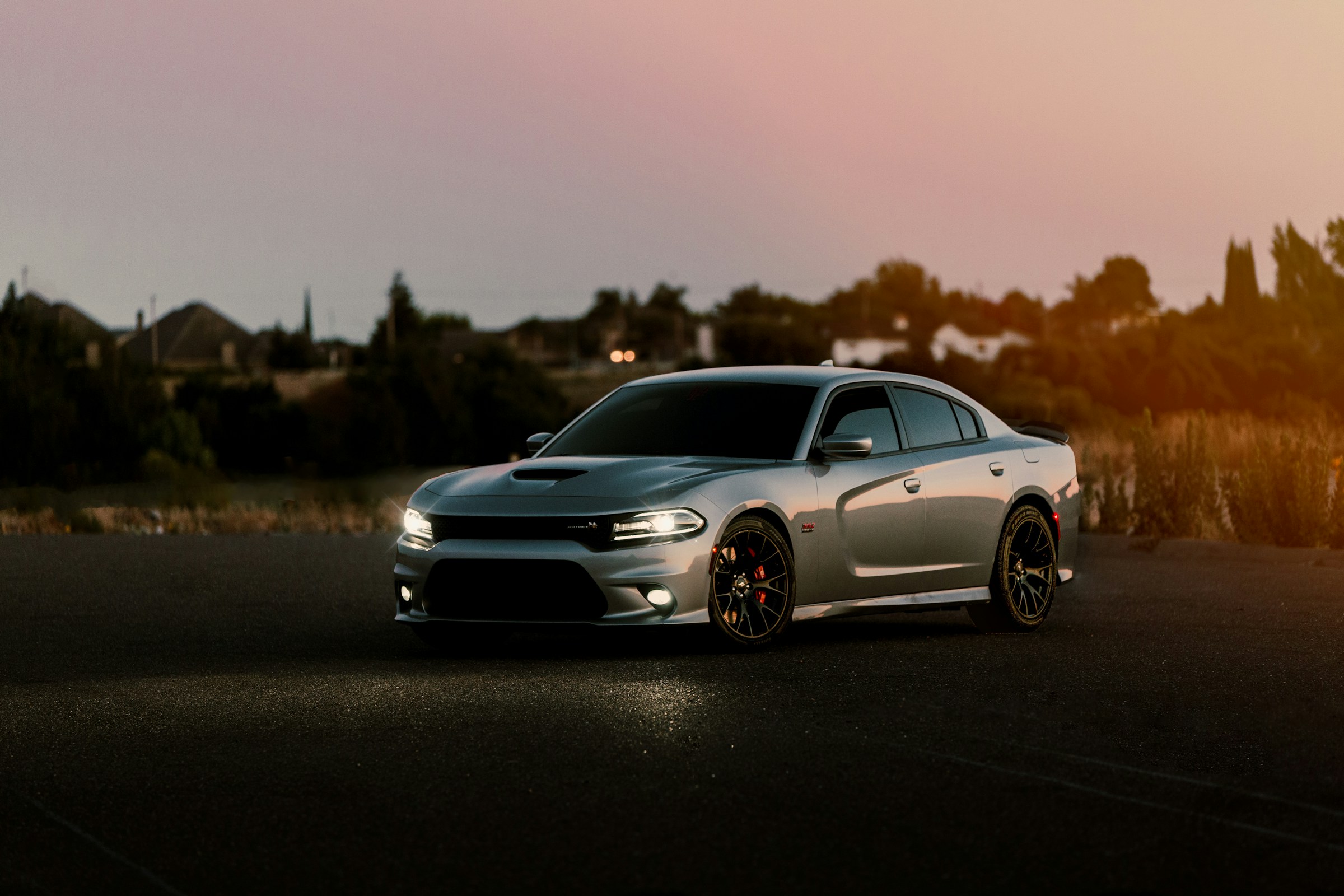When it comes to American muscle cars, few names evoke as much passion and excitement as the Dodge Challenger and Dodge Charger. Both vehicles boast powerful engines, aggressive styling, and a rich heritage that appeals to enthusiasts and everyday drivers alike. Their shared Dodge lineage and similar performance capabilities often lead buyers to weigh the pros and cons of each before making a purchase.

Get to Know the Dodge Challenger Better
The Dodge Challenger is an iconic American muscle car with a storied history that dates back to the late 1960s. Introduced in 1970 as Dodge’s answer to the growing popularity of pony cars like the Ford Mustang and Chevrolet Camaro, the Challenger quickly made a name for itself with its bold styling, powerful engines, and impressive performance capabilities.
History
The first-generation Dodge Challenger was produced from 1970 to 1974 and was built on the Chrysler E-body platform. It was available in a variety of trims and engine options, including the legendary 426 HEMI V8, which solidified its reputation as a true muscle car powerhouse. After a hiatus in production during the 1980s and 1990s, Dodge revived the Challenger in 2008, bringing back its retro-inspired design that paid homage to the classic models while incorporating modern technology and safety features.
Since its reintroduction, the Challenger has maintained its muscle car heritage with aggressive styling cues like a wide stance, bold grille, and signature dual headlights. It has also evolved to offer a range of trims from the more affordable SXT to the high-performance SRT Hellcat and Demon variants, catering to different levels of performance enthusiasts.
Performance
The Dodge Challenger is renowned for its impressive engine lineup and raw power. Base models typically come equipped with a V6 engine that balances everyday drivability with decent power. However, the real muscle lies in the V8 options, including the legendary 5.7L HEMI V8, the 6.4L HEMI V8 found in the R/T Scat Pack, and the supercharged 6.2L HEMI V8 engines powering the SRT Hellcat and Demon models.
These engines deliver exhilarating horsepower and torque figures, making the Challenger one of the most powerful muscle cars on the market. The Hellcat, for example, boasts over 700 horsepower, enabling blistering acceleration and an unmistakable exhaust note. Additionally, the Challenger offers rear-wheel drive and available manual transmissions, appealing to purists who crave an engaging driving experience.
Beyond straight-line speed, the Challenger features modern suspension tuning, Brembo brakes, and advanced traction and stability control systems, helping to balance performance with safety and handling. While its larger size and weight make it less nimble than some competitors, the Challenger excels at delivering classic muscle car thrills with contemporary refinement.
Learn More About the Dodge Charger
The Dodge Charger is another legendary name in the muscle car world, with a rich history that dates back to the mid-1960s. Known for blending powerful performance with four-door practicality, the Charger has carved out a unique niche that appeals to enthusiasts who want muscle car excitement without sacrificing everyday usability.
History
The Dodge Charger was first introduced in 1966 as a fastback two-door coupe, quickly gaining fame for its bold styling and strong performance. The second generation (1968-1970) is especially celebrated for its aggressive design and availability of high-performance engines like the 426 HEMI and 440 Magnum V8s. After several redesigns and a production pause in the 1980s and 1990s, the Charger was revived in 2006, this time as a full-size four-door sedan built on Chrysler’s LX platform.
This modern revival transformed the Charger into a unique muscle car that offers spacious seating and practicality while still delivering the power and aggressive styling muscle car fans expect. The Charger’s combination of performance and functionality has helped it maintain popularity among a broader range of drivers, including families and those who need more space but don’t want to compromise on performance.
Performance
The Dodge Charger offers a diverse range of engine options to suit different driving needs. The base models typically feature a V6 engine that provides solid performance with good fuel efficiency for a muscle car. However, the Charger’s real appeal lies in its lineup of V8 engines, including the 5.7L HEMI V8, the 6.4L HEMI V8 in the Scat Pack trim, and the supercharged 6.2L HEMI V8 powering the SRT Hellcat and even more extreme variants like the Hellcat Redeye.
These powerful engines deliver impressive horsepower and torque, with the Hellcat models pushing well over 700 horsepower, enabling blistering acceleration and high-speed performance. The Charger features rear-wheel drive as standard, with all-wheel drive available on select trims, enhancing traction and drivability in various conditions.
In addition to raw power, the Charger is equipped with performance-tuned suspension, Brembo brakes, and advanced electronic stability and traction control systems. Despite its larger size and four-door configuration, the Charger handles surprisingly well, offering a balanced mix of muscle car excitement and everyday usability.
Comparing the Two: Which Car Is Better?
There’s a lot to consider when comparing these two cars, because there’s quite a bit to like about both options.
Performance
Engine Options: Both the Challenger and Charger offer similar engine lineups, including V6 and V8 options, with the high-performance 6.2L supercharged HEMI V8 available in Hellcat trims. However, the Challenger is exclusively rear-wheel drive, while the Charger offers both rear-wheel drive and available all-wheel drive, which can be a deciding factor for drivers in regions with varying weather conditions.
Driving Dynamics: The Challenger’s coupe design and slightly lighter weight give it a more traditional muscle car feel with strong straight-line acceleration and a visceral driving experience. The Charger, being a larger four-door sedan, offers more interior space and a more comfortable ride, but it is slightly less nimble in tight corners.
Transmission: Both cars offer automatic transmissions as standard, with manual transmissions available on select Challenger trims, appealing to purists who want a more engaged driving experience.


Safety
Safety Features: Both vehicles come equipped with a comprehensive suite of modern safety features, including multiple airbags, stability control, traction control, and advanced braking systems.
Driver Assistance: The Charger generally has an edge here, as it offers more advanced driver assistance technologies as standard or available options, such as adaptive cruise control, blind-spot monitoring, lane departure warning, and forward collision warning with automatic emergency braking. While the Challenger offers many of these features, some are limited to higher trims or optional packages.
Crash Ratings: Both cars have performed well in crash tests conducted by agencies like the IIHS and NHTSA, but the Charger’s larger size and four-door design typically provide a slight advantage in occupant protection in the event of an accident.
Price
Starting Price: The Dodge Challenger typically starts at a slightly lower base price compared to the Charger, making it a more budget-friendly option for buyers focused on muscle car style and performance.
Higher Trims: At the upper end, pricing for high-performance Hellcat and Demon trims on both models is comparable, with costs rising significantly due to their powerful engines and premium features.
Choosing between the Dodge Challenger and Dodge Charger ultimately comes down to your priorities. If you want a classic muscle car coupe with an emphasis on raw performance and style, the Challenger is a fantastic choice. On the other hand, if you need a powerful muscle car that also offers practicality, more interior space, and advanced safety features, the Charger is likely the better fit.
Article Last Updated: September 1, 2025.


